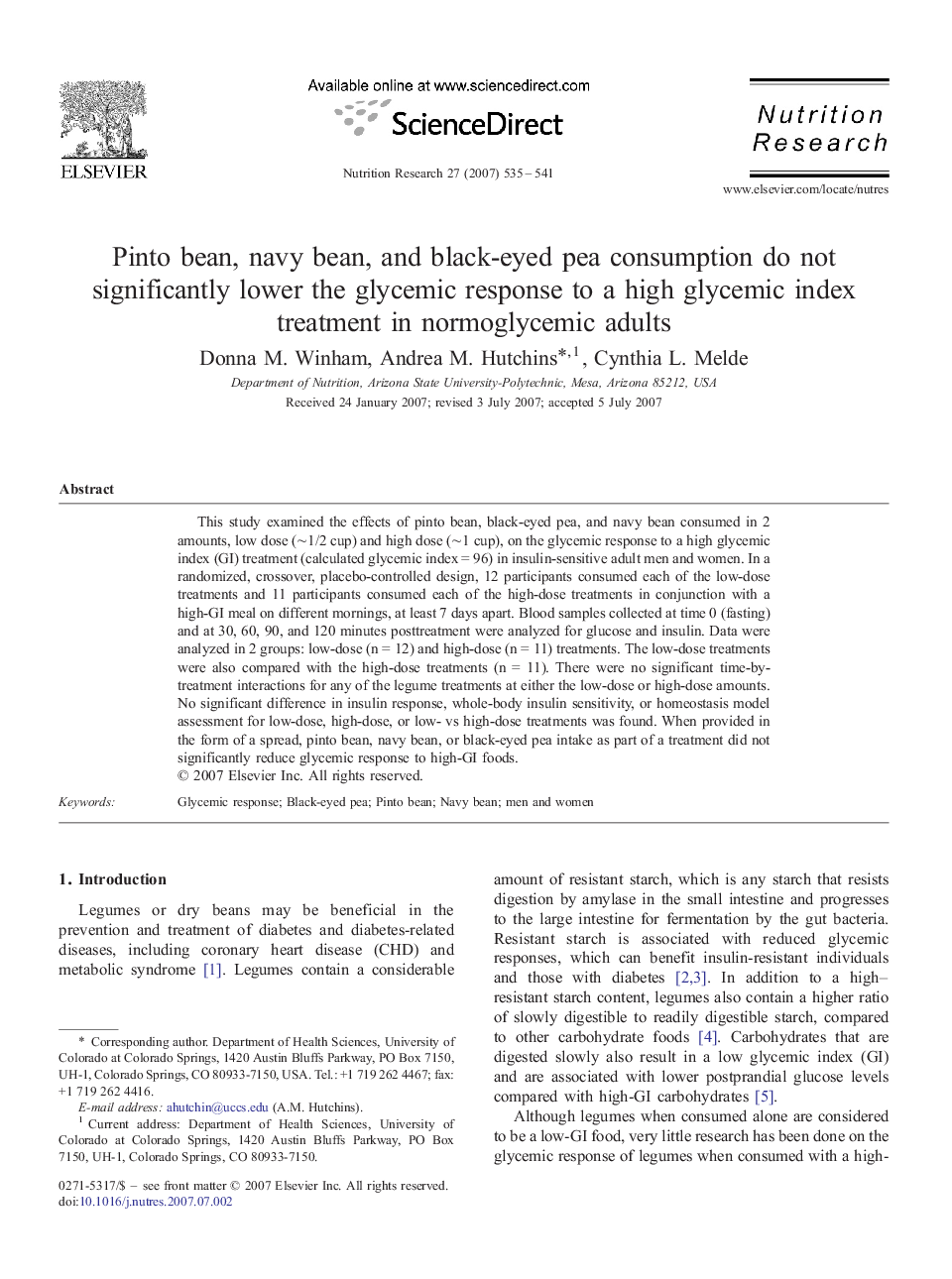| Article ID | Journal | Published Year | Pages | File Type |
|---|---|---|---|---|
| 2809633 | Nutrition Research | 2007 | 7 Pages |
This study examined the effects of pinto bean, black-eyed pea, and navy bean consumed in 2 amounts, low dose (∼1/2 cup) and high dose (∼1 cup), on the glycemic response to a high glycemic index (GI) treatment (calculated glycemic index = 96) in insulin-sensitive adult men and women. In a randomized, crossover, placebo-controlled design, 12 participants consumed each of the low-dose treatments and 11 participants consumed each of the high-dose treatments in conjunction with a high-GI meal on different mornings, at least 7 days apart. Blood samples collected at time 0 (fasting) and at 30, 60, 90, and 120 minutes posttreatment were analyzed for glucose and insulin. Data were analyzed in 2 groups: low-dose (n = 12) and high-dose (n = 11) treatments. The low-dose treatments were also compared with the high-dose treatments (n = 11). There were no significant time-by-treatment interactions for any of the legume treatments at either the low-dose or high-dose amounts. No significant difference in insulin response, whole-body insulin sensitivity, or homeostasis model assessment for low-dose, high-dose, or low- vs high-dose treatments was found. When provided in the form of a spread, pinto bean, navy bean, or black-eyed pea intake as part of a treatment did not significantly reduce glycemic response to high-GI foods.
